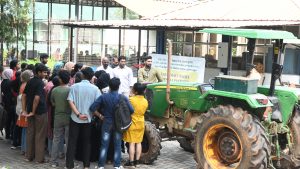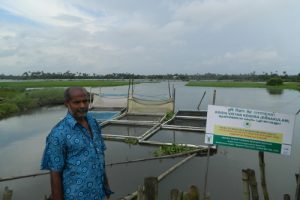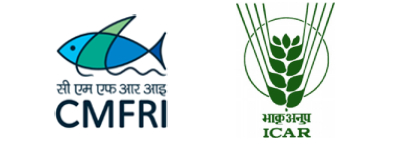Quantitative genetic manipulation for nauplii size reduction of Artemia
franciscana Kellogg, 1906 from Indian salinas and correlated changes in
the polyunsaturated fatty acids (PUFA) profile
Sajesh Kumar, N K and Vikas, P A and Thomas, P C and Chakraborty, Kajal and Jayasankar, J and Vijayan, K K (2014) Quantitative genetic manipulation for nauplii size reduction of Artemia franciscana Kellogg, 1906 from Indian salinas and correlated changes in the polyunsaturated fatty acids (PUFA) profile. Indian Journal of Fisheries, 61 (3). pp. 69-73.
Abstract
Thirteen generations of mass selection was carried out in a strain of Artemia franciscana collected from an Indian salina. The primary trait under selection was nauplii length, and the criteria of selection was small size. While 12.4% reduction (from 517.0±59.8 µm to 452.2±25.0 µm) was realised in the trait under selection from 13 generations, substantial increase in the polyunsaturated fatty acids (PUFA) content was realised as correlated response. The polyunsaturated fatty acid (PUFA) content showed a steady increase during the selection. The PUFA percentage in G2, G4, G6, G9, G11 and G13 generations
were 21.43, 27.96, 27.19, 33.27, 36.98 and 37.25 respectively compared to 18.04 in the base generation. The content of essential polyunsaturated fatty acids such as 20:5n-3 and 22:6n-3 were also high in the selected generations, compared to the base generation indicating their nutritional superiority. The smaller nauplii with an enhanced level of PUFA, especially the essential polyunsaturated fatty acids, developed through selective breeding in the present work make it a promising strain as live feed for larviculture of marine species.

Sajeshkumar_IJF_61_3.pdf
Download
Official URL:
Item Type: Article
Subjects: ,



